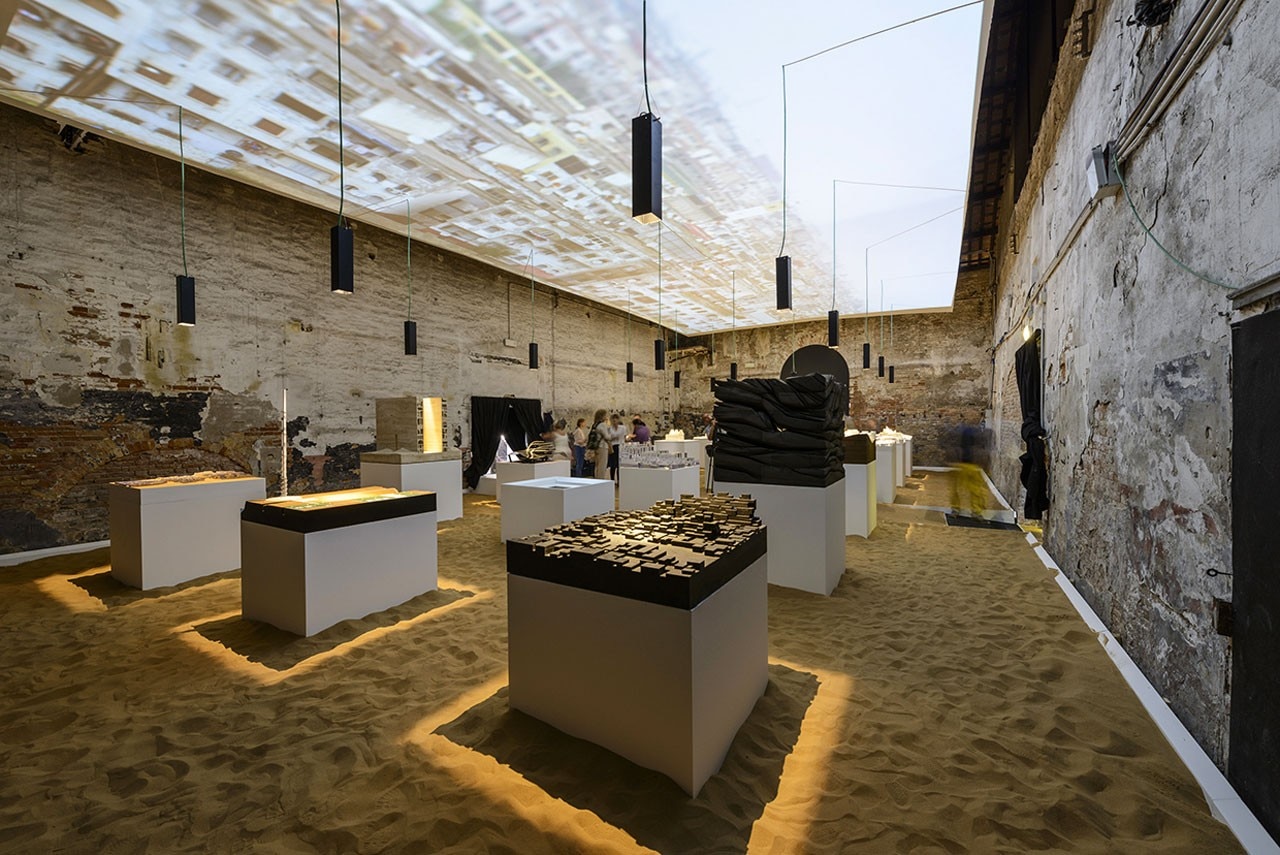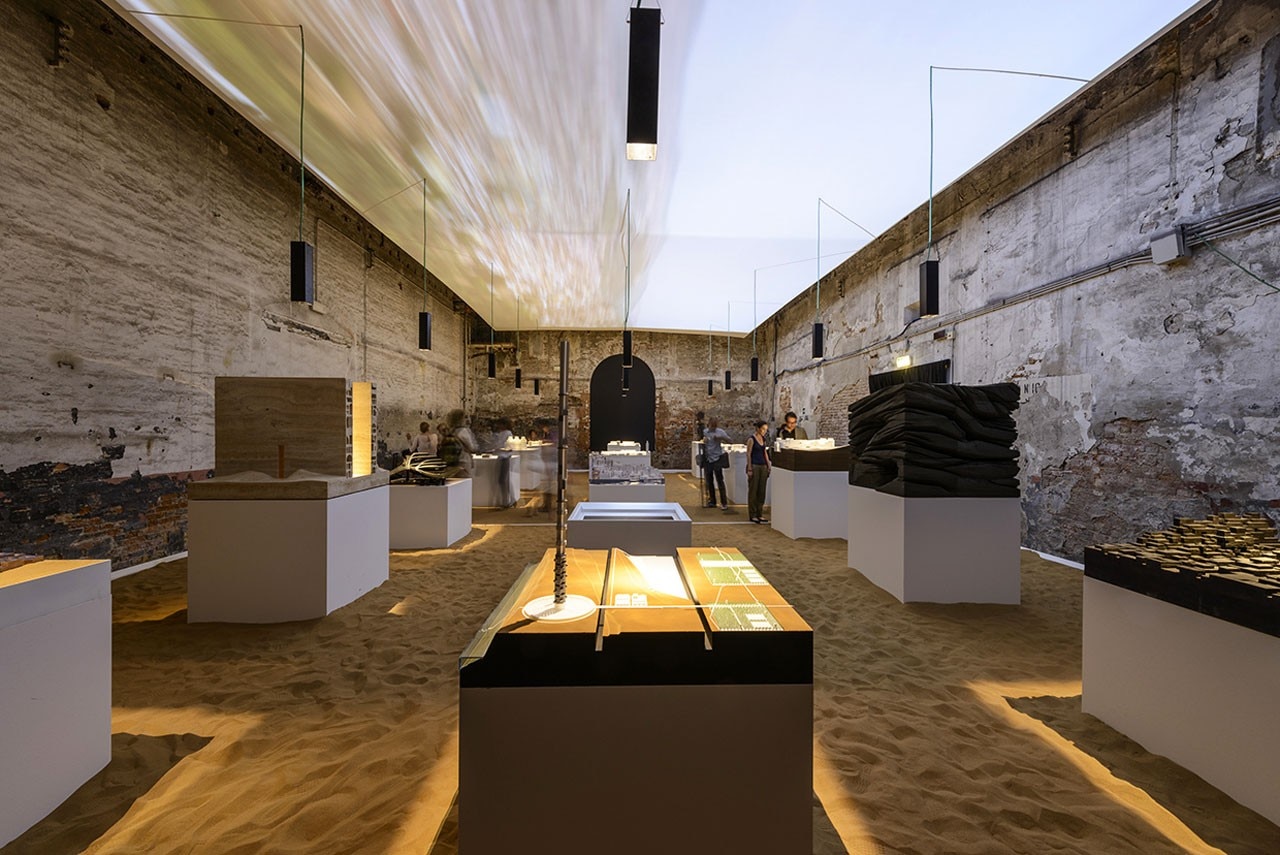
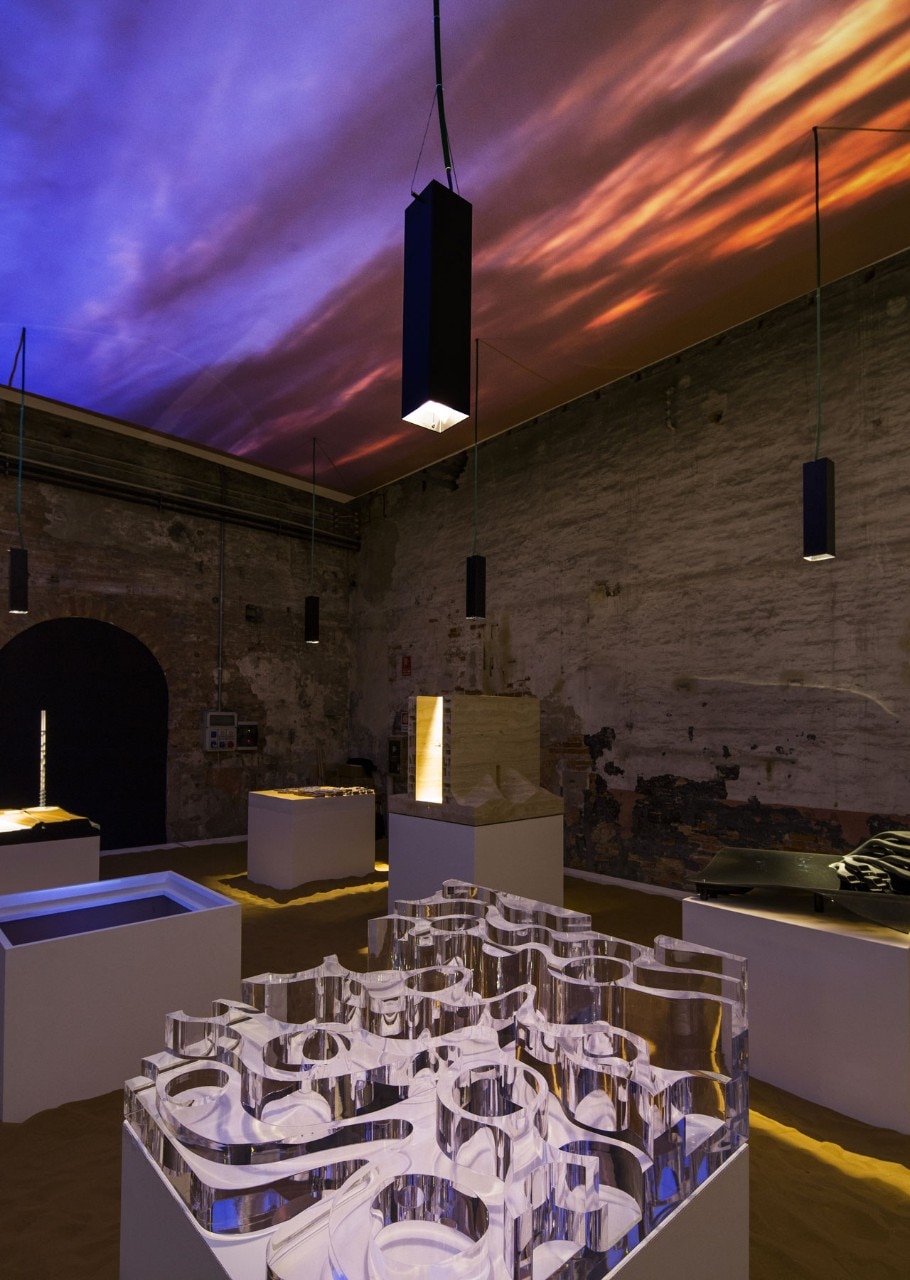
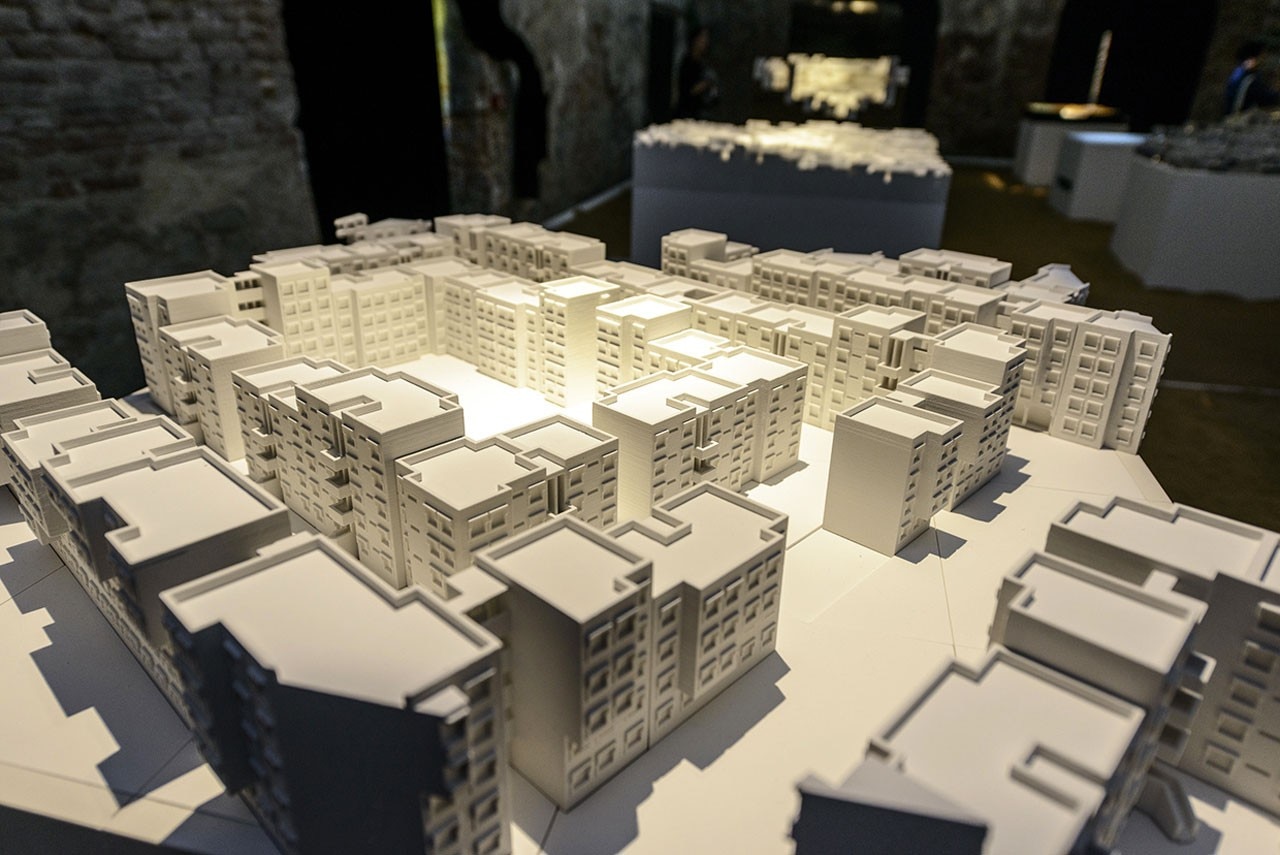
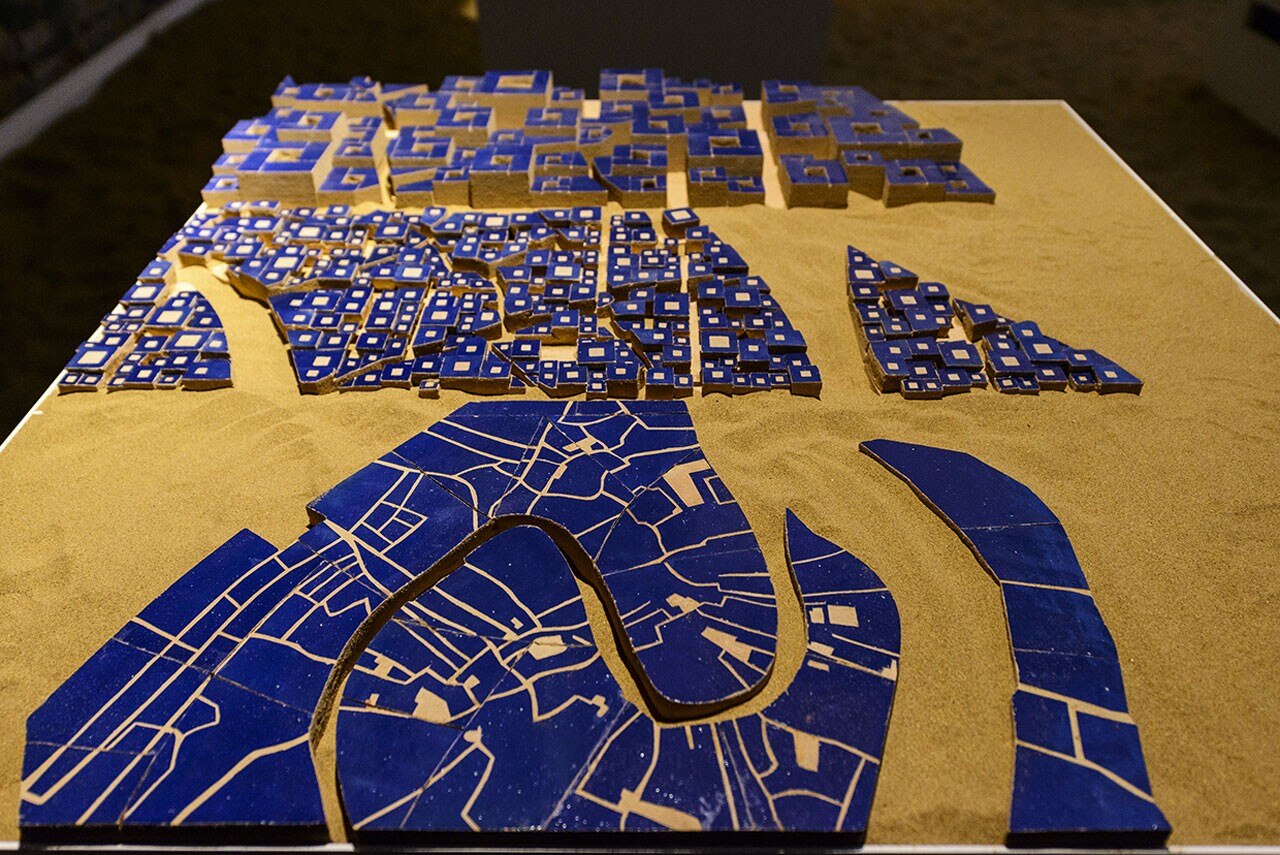
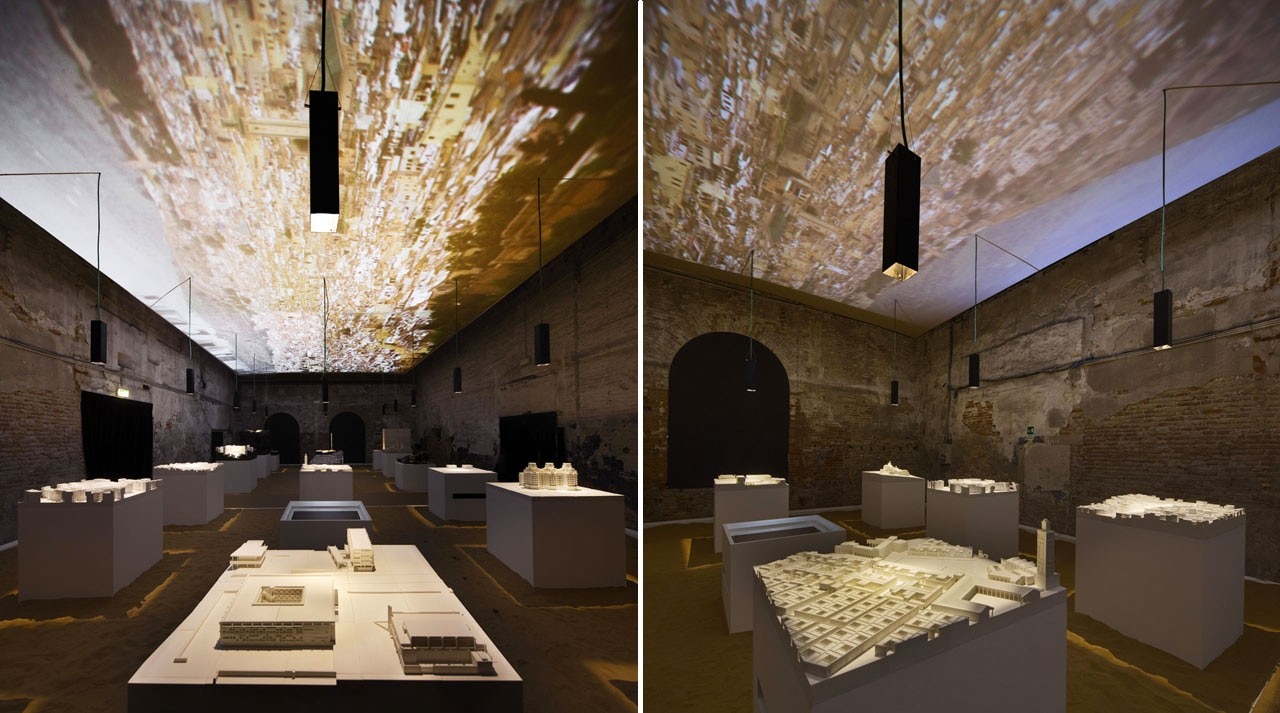
The fundamental question of the habitability of difficult areas places in parallel the practice of globalisation and identitary resistance within a historical journey of urban planning that accommodates contemporary thinking for new development, in the sense of original. “It is a question of maximum attention: the architects project their personal ideas onto others, on to the next person” adds the curator. “We want to demonstrate that thanks to the people that live there, architecture is to be considered a living material”.
Situated between Africa and Europe and looking out onto the Atlantic and the Mediterranean, Morocco is a country with a diverse and millennial urban fabric; its pavilion is presented as a contemporary snapshot of a country that looks to the sand of the Sahara – reinstated in the national territory since 1975 – no longer as a limit to liveability or an insurmountable margin but as a resource. The desert is a territory able to bring to the present situation a chance to reclaim the radical, combining the universal with the authentic.
Morocco
Fundamental(ism)s
Commissioner: Hassan Abouyoub (Morocco's Ambassador, Rome)
Curator: Tarik Oualalou
Location: Pavilion at the Arsenale
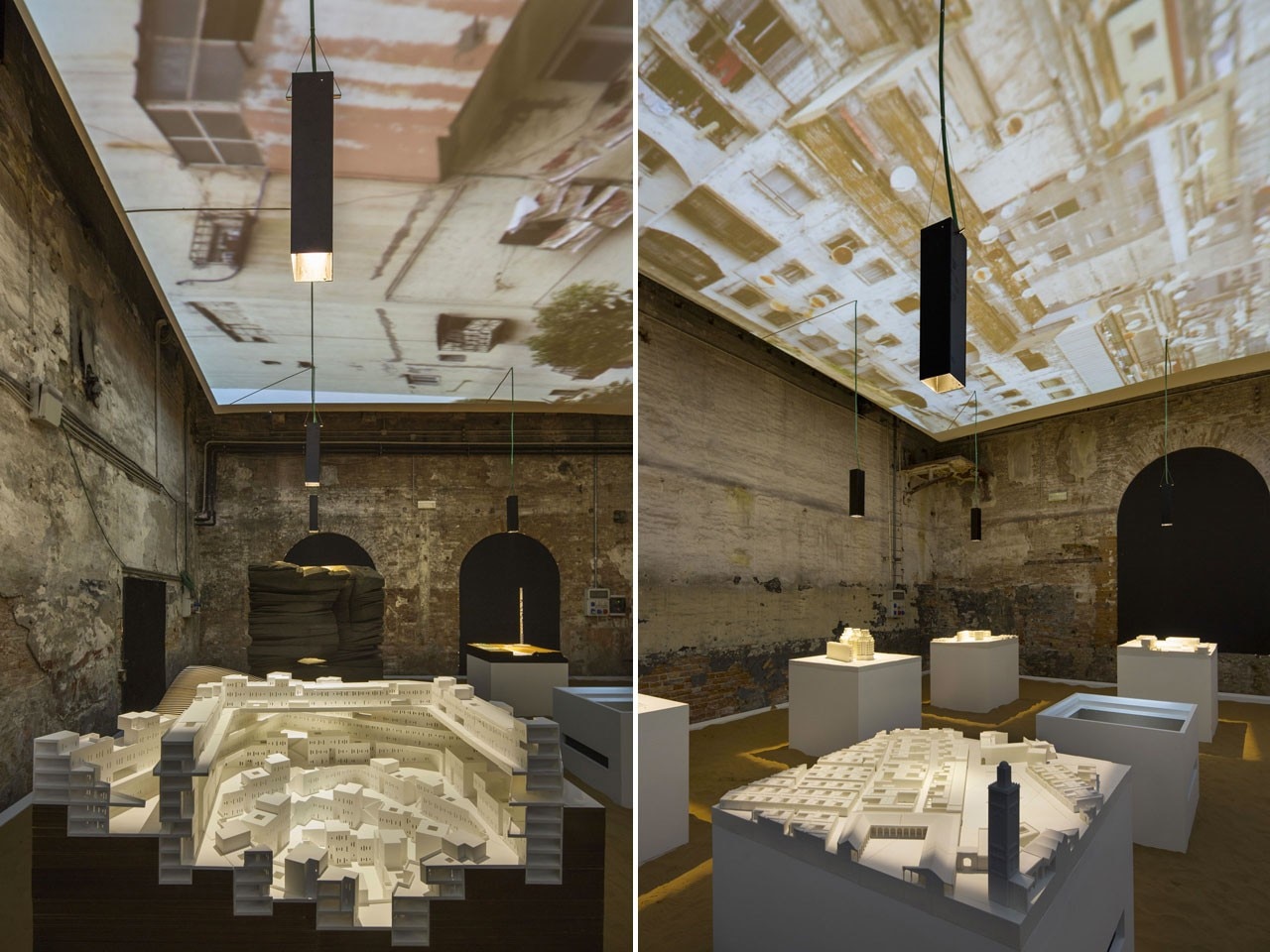
Until 23 November 2014
14. Biennale di Architettura
Fundamentals
Arsenale, Venice


